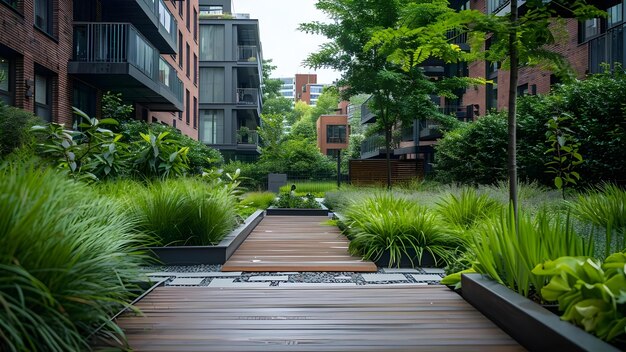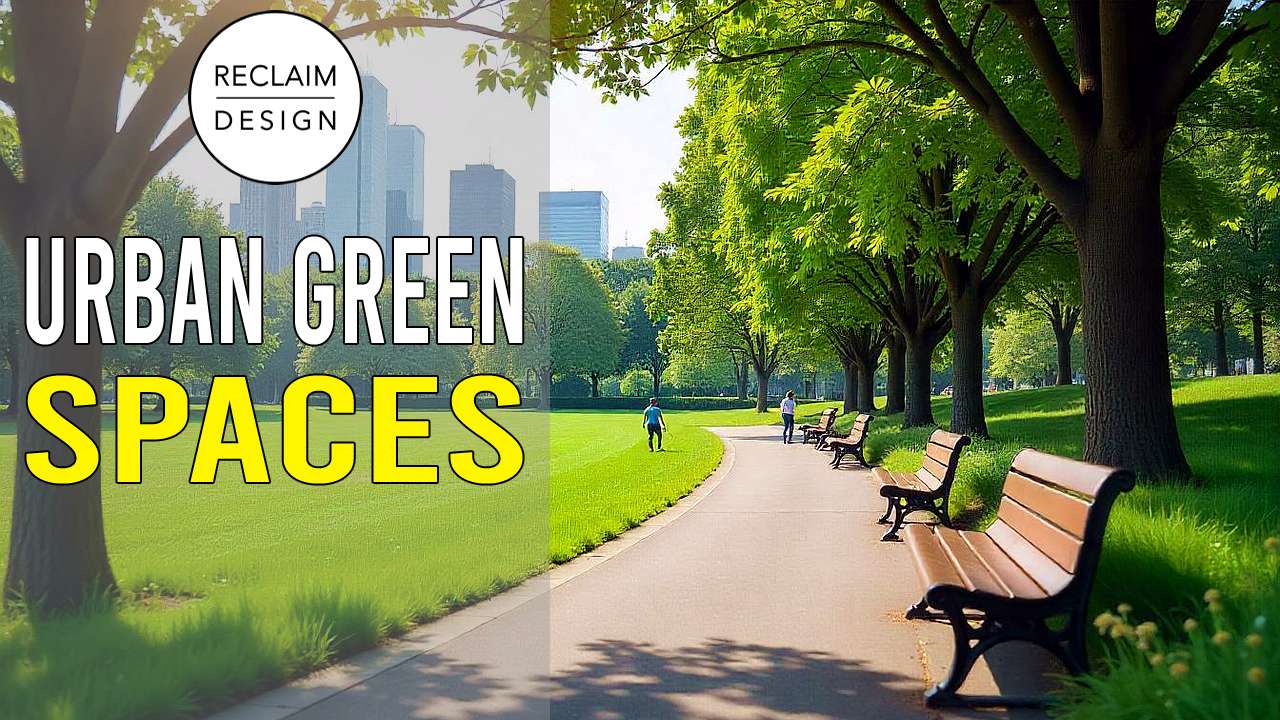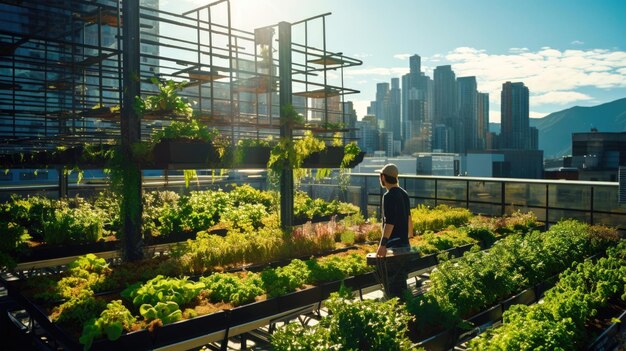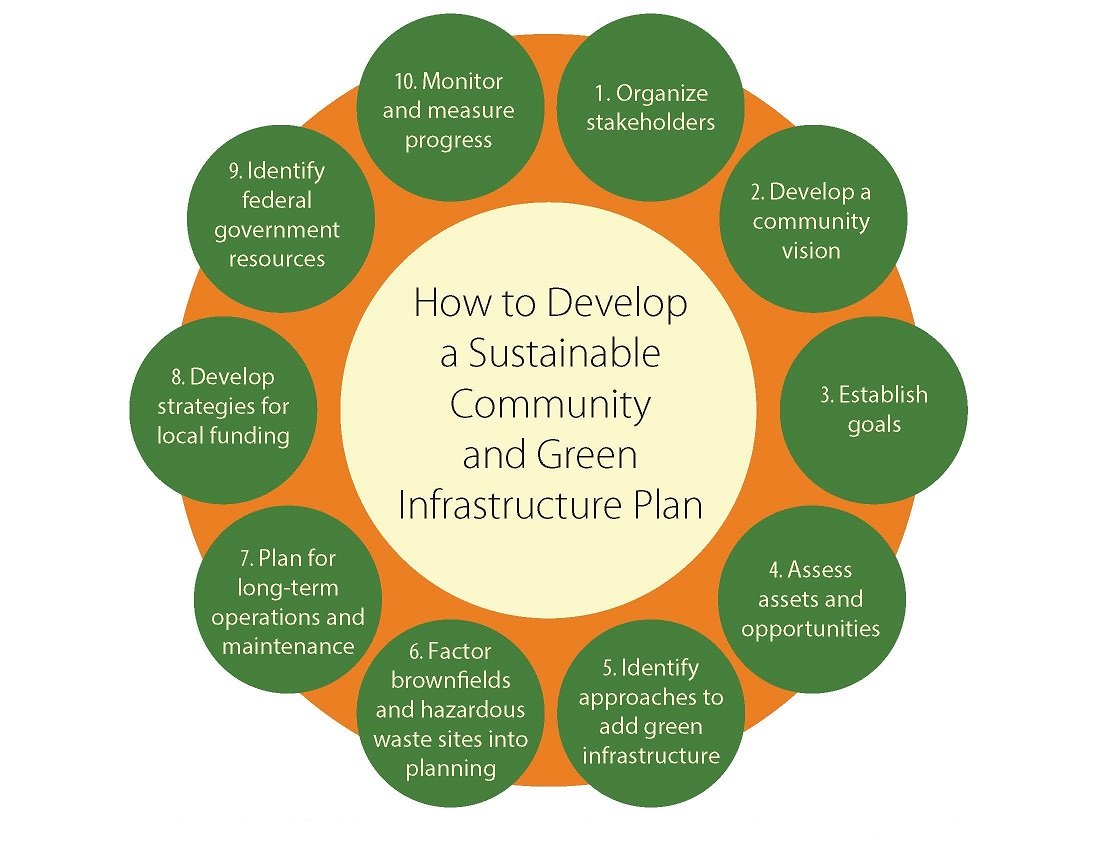
Breathing Life into Cities: The Vital Role of Sustainable Urban Green Spaces
Cities, the bustling hubs of human activity, are often characterized by concrete jungles and a relentless pace of life. But amidst the towering skyscrapers and crowded streets, a quiet revolution is taking place: the embrace of sustainable urban green spaces. These verdant havens are more than just aesthetically pleasing; they are essential for the well-being of both people and the planet. This article delves into the multifaceted importance of these spaces, exploring their environmental, social, and economic benefits, and examining the strategies for their successful implementation and maintenance. We’ll uncover why these green oases are not just a luxury, but a necessity for a thriving urban future.
The Environmental Symphony: How Green Spaces Benefit Our Planet
The environmental advantages of urban green spaces are vast and far-reaching. They act as vital lungs for our cities, providing a multitude of ecosystem services that are crucial for a healthy environment. Let’s explore some of the key contributions:
Air Quality Enhancement
One of the most significant benefits is the improvement of air quality. Trees and other vegetation act as natural air purifiers, absorbing pollutants like carbon dioxide, sulfur dioxide, and particulate matter. They effectively filter out harmful substances, releasing fresh oxygen into the atmosphere. This is particularly important in urban areas, where air pollution levels are often high due to traffic, industrial activity, and other sources. By increasing the number of green spaces, we can mitigate the detrimental effects of air pollution on human health and reduce the incidence of respiratory illnesses.
Climate Change Mitigation
Green spaces play a crucial role in mitigating the effects of climate change. Trees absorb carbon dioxide, a major greenhouse gas, from the atmosphere, effectively acting as carbon sinks. They also help to reduce the urban heat island effect, where cities experience higher temperatures than surrounding rural areas. This is achieved through evapotranspiration, the process by which trees release water vapor, which cools the air. Furthermore, green spaces can help to reduce energy consumption by shading buildings and reducing the need for air conditioning. By strategically incorporating green spaces into urban planning, we can contribute significantly to the fight against climate change.
Water Management and Flood Control
Green spaces are also essential for effective water management. They help to absorb rainwater, reducing runoff and the risk of flooding. The vegetation and soil act as a natural sponge, allowing water to slowly infiltrate the ground, replenishing groundwater reserves. This is particularly important in urban areas, where impervious surfaces like concrete and asphalt prevent water from being absorbed. By incorporating green spaces, we can reduce the burden on drainage systems, prevent erosion, and protect water quality. These spaces also help to filter pollutants from stormwater runoff before it enters rivers and streams.
Biodiversity Conservation
Urban green spaces provide habitats for a diverse range of plant and animal species, contributing to biodiversity conservation. They offer refuge for birds, insects, and other wildlife, allowing them to thrive in an otherwise hostile environment. These spaces can also serve as corridors, connecting fragmented habitats and facilitating the movement of species. By creating and maintaining green spaces, we can help to preserve biodiversity and create more resilient ecosystems. This is especially important as urban areas expand and encroach upon natural habitats.
The Social Fabric: How Green Spaces Enhance Human Well-being
Beyond their environmental benefits, urban green spaces offer a plethora of social advantages, enriching the lives of urban residents in numerous ways. They provide opportunities for recreation, social interaction, and improved mental and physical health. Let’s explore some of the key social benefits:
Improved Mental and Physical Health
Studies have consistently shown the positive impact of green spaces on mental and physical health. Spending time in nature has been linked to reduced stress levels, improved mood, and a lower risk of depression and anxiety. Access to green spaces provides opportunities for physical activity, such as walking, jogging, and cycling, which can improve cardiovascular health, strengthen bones, and boost the immune system. Exposure to nature has also been shown to enhance cognitive function, improving focus and concentration. In a fast-paced urban environment, green spaces offer a much-needed respite and a chance to reconnect with nature, promoting overall well-being.
Opportunities for Recreation and Leisure
Green spaces provide a variety of recreational opportunities for people of all ages and abilities. Parks, gardens, and other green spaces offer spaces for picnics, sports, and other leisure activities. They provide a place for families to spend time together, for children to play, and for individuals to relax and unwind. These spaces also often host community events, such as concerts, festivals, and farmers’ markets, fostering a sense of community and social cohesion. By providing these opportunities, green spaces contribute to a higher quality of life for urban residents.
Social Interaction and Community Building
Green spaces act as important social hubs, facilitating interaction and fostering a sense of community. They provide a place for people to meet, socialize, and connect with each other. Parks and gardens often host community events, such as gardening workshops, outdoor concerts, and volunteer activities, bringing people together and strengthening social bonds. Green spaces can also help to reduce social isolation, particularly for vulnerable populations such as the elderly and people with disabilities. By creating opportunities for social interaction, green spaces contribute to a more vibrant and connected urban environment.
Educational Opportunities
Green spaces offer valuable educational opportunities, providing a living laboratory for learning about nature, ecology, and environmental conservation. They can be used for educational programs, such as guided nature walks, environmental workshops, and school field trips. Green spaces provide a valuable opportunity for children to connect with nature, learn about the environment, and develop a sense of appreciation for the natural world. These educational opportunities can help to foster environmental awareness and promote sustainable practices.
The Economic Advantage: Green Spaces and Urban Prosperity
The benefits of urban green spaces extend beyond environmental and social considerations; they also contribute to economic prosperity. Green spaces can enhance property values, attract investment, and boost tourism, creating a more vibrant and economically resilient urban environment. Let’s examine some of the key economic benefits:
Increased Property Values
Proximity to green spaces has been shown to increase property values. Homes located near parks, gardens, and other green spaces often command higher prices than those in areas without such amenities. This is due to the desirability of living in a pleasant and aesthetically pleasing environment, with access to recreational opportunities and improved air quality. The presence of green spaces can also make an area more attractive to businesses and investors, leading to economic growth.
Attracting Investment and Tourism
Green spaces can enhance the attractiveness of a city, attracting investment and boosting tourism. Well-maintained parks and gardens can become iconic landmarks, drawing visitors from near and far. Tourists often seek out destinations with green spaces and recreational opportunities, contributing to the local economy through spending on accommodation, food, and other services. Green spaces can also attract businesses and investors, who are drawn to cities with a high quality of life and a pleasant environment for their employees. This can lead to job creation and economic growth.
Cost Savings on Healthcare and Infrastructure
By improving air quality, reducing stress levels, and promoting physical activity, green spaces can contribute to cost savings on healthcare. A healthier population requires less medical care, reducing healthcare costs for both individuals and the government. Green spaces can also help to reduce the need for costly infrastructure projects, such as stormwater management systems and air pollution control measures. By providing natural solutions to environmental challenges, green spaces can help to reduce the overall cost of urban development.
Job Creation
The creation and maintenance of green spaces can generate employment opportunities. Landscaping, gardening, and park maintenance require skilled workers, creating jobs in the green industry. Green spaces can also create opportunities for related businesses, such as nurseries, garden centers, and recreational facilities. By investing in green spaces, cities can stimulate economic activity and create new employment opportunities.
Designing for Success: Strategies for Sustainable Urban Green Spaces
Creating and maintaining sustainable urban green spaces requires careful planning, design, and management. It involves considering various factors, including the needs of the community, the local environment, and the long-term sustainability of the spaces. Here are some key strategies for designing for success:
Strategic Planning and Site Selection
The first step is to develop a comprehensive plan for incorporating green spaces into the urban landscape. This involves identifying suitable sites, considering the needs of the community, and assessing the environmental conditions. Site selection should consider factors such as soil quality, water availability, and sunlight exposure. The plan should also prioritize the creation of green spaces in areas where they are most needed, such as densely populated neighborhoods and areas with poor air quality. Strategic planning ensures that green spaces are strategically located and effectively contribute to the overall well-being of the city.
Diverse and Adaptable Design
Green spaces should be designed to be diverse and adaptable, catering to a variety of needs and interests. This includes incorporating a range of features, such as parks, gardens, playgrounds, and community gardens. The design should also consider the needs of different age groups and abilities. Adaptability is key, as green spaces should be able to adapt to changing environmental conditions and the evolving needs of the community. This can be achieved through the use of flexible designs, such as modular gardens and multi-purpose spaces.
Native and Climate-Appropriate Planting
The selection of plants is crucial for the sustainability of green spaces. Native plants are generally better adapted to the local climate and require less water and maintenance than non-native species. They also provide habitat for local wildlife and contribute to biodiversity conservation. Climate-appropriate planting involves selecting plants that are well-suited to the local climate and can withstand extreme weather conditions, such as droughts and floods. This reduces the need for irrigation and other resource-intensive practices.
Water Conservation and Management
Water conservation is essential for the sustainability of urban green spaces. This can be achieved through various strategies, such as using drought-tolerant plants, installing efficient irrigation systems, and collecting rainwater for irrigation. Green spaces can also play a role in water management by absorbing rainwater and reducing runoff. The design of green spaces should incorporate features that promote water conservation and reduce the impact on water resources.
Community Engagement and Participation
Community engagement is vital for the success of urban green spaces. Involving the community in the planning, design, and maintenance of green spaces ensures that they meet the needs of the residents and are well-supported. This can be achieved through public consultations, community workshops, and volunteer programs. Community participation fosters a sense of ownership and pride in the green spaces, leading to their long-term sustainability.
Sustainable Maintenance Practices
Sustainable maintenance practices are essential for the long-term health and well-being of green spaces. This includes using organic fertilizers and pesticides, reducing the use of water and energy, and managing waste responsibly. Regular maintenance, such as pruning, weeding, and mulching, is also important for keeping the green spaces healthy and attractive. Sustainable maintenance practices ensure that green spaces are maintained in a way that minimizes their environmental impact and maximizes their benefits.
Challenges and Solutions: Overcoming Obstacles
While the benefits of urban green spaces are undeniable, their implementation and maintenance can present various challenges. These challenges must be addressed to ensure the successful integration of green spaces into the urban environment. Here are some common challenges and their potential solutions:
Land Acquisition and Costs
One of the biggest challenges is the cost and availability of land, especially in densely populated urban areas. Land acquisition can be expensive, and there may be competition for land use from other sectors. Solutions include repurposing underutilized land, such as brownfields and vacant lots, for green spaces. Public-private partnerships can also be used to share the costs and responsibilities of land acquisition. Furthermore, innovative design solutions, such as vertical gardens and green roofs, can maximize the use of limited space.
Funding and Resources
Securing adequate funding and resources for the creation and maintenance of green spaces can be a challenge. Funding sources may be limited, and competition for resources can be fierce. Solutions include seeking funding from various sources, such as government grants, private donations, and corporate sponsorships. Community fundraising and volunteer programs can also help to supplement funding and provide valuable support. Furthermore, prioritizing the long-term sustainability of green spaces can help to reduce maintenance costs.
Maintenance and Management
Maintaining green spaces requires ongoing effort and resources. Issues such as vandalism, littering, and the need for regular maintenance can pose challenges. Solutions include engaging the community in the maintenance and management of green spaces. This can be achieved through volunteer programs, community gardening initiatives, and educational programs. Implementing effective waste management systems and providing adequate security can also help to reduce vandalism and littering. Furthermore, using durable and low-maintenance materials can help to reduce maintenance costs.
Public Awareness and Education
Raising public awareness about the importance of green spaces and educating the public about their benefits can be a challenge. Many people may not fully understand the value of green spaces or may not be aware of the need for their preservation. Solutions include implementing public education campaigns, organizing community events, and incorporating green space education into school curricula. Promoting the benefits of green spaces through various media channels can also help to raise awareness and encourage public support.
The Future is Green: Embracing Sustainable Urban Green Spaces
The future of urban living is inextricably linked to the integration of sustainable urban green spaces. These spaces are not merely a luxury; they are a necessity for creating healthy, vibrant, and resilient cities. By embracing green spaces, we can improve air quality, mitigate climate change, enhance biodiversity, and promote the well-being of our communities. The time to invest in these essential spaces is now. Let’s work together to make our cities greener, healthier, and more sustainable for future generations.
Call to Action
What steps can you take to contribute to the greening of your city? Support local initiatives, volunteer in community gardens, and advocate for the creation of more green spaces. Every action, no matter how small, makes a difference. Let’s work together to create a more sustainable and livable urban future, one green space at a time. Encourage your local government to prioritize green space initiatives. Participate in community planting days. Choose to spend time in green spaces and appreciate the benefits they bring. Spread awareness about the importance of urban green spaces to your friends and family.



